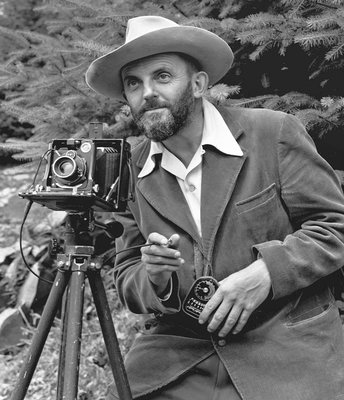Last updated: August 4, 2023
Lesson Plan
Commercial and Non-Industrial Occupations
Pre-Visit Activity 3:
Picture Taking

- Grade Level:
- Upper Elementary: Third Grade through Fifth Grade
- Subject:
- Social Studies
- Lesson Duration:
- 60 Minutes
- Common Core Standards:
- 4.SL.1, 4.W.2
- Thinking Skills:
- Understanding: Understand the main idea of material heard, viewed, or read. Interpret or summarize the ideas in own words.
Objective
Students will demonstrate an understanding of photography techniques by practicing using a school-owned or personal camera and printing at least one picture.
Background
Photography is an art form that produces a still image. In the modern era, this is mostly done digitally. The first person to create an image was Nicéphore Niépce in 1826. Cameras and photography continued to evolve and by the 19th century, glass plates were used to capture images. Plastic films were developed around 1890. Originally, photographs were black-and-white images, but by the 1840s, photographers were experimenting with color images. The first color photograph was taken in 1861.
Digital photography was first commercially available in 1991, but was limited by its high cost to the consumer until the late 1990s and early 2000s. Photography is now used for various purposes. One purpose is for documentation, while another is to tell a story through images. Photographs can be manipulated using viewpoints, angles, or by composing the subject in a particular way. Lighting is also a way to manipulate images.
Preparation
None.
Materials Needed
- Class camera or cameras for each student
- Photographs (digital and printed)
- Internet access
Lesson Hook/Preview
Begin class by showing samples of some of your favorite photos.
Procedure
1. Optional: Prior to activity, consult art teacher or photographer for tips and ideas.
2. Begin class by showing samples of some of your favorite photos. This can be done digitally by projecting the images on the board. Discuss aspects of these photos. What do they notice? What is the subject? If possible, show a picture taken from two different viewpoints and compare/contrast.
3. Divide students into small groups and hand out printed photographs. Students should then discuss what they notice about the picture and what they do or do not like about the picture.
4. Students will share what their group discussed about the photographs.
5. Assign students to find a picture at home that they took and to reflect on it. Where were they when they took the picture? Why did they decide to use that angle? Did they zoom in on the subject? Did they think about what they wanted the photo to look like, or did they take the picture without any contemplation. If the students do not have access to a photo they took, they may work in partners or choose a photo that someone else took. They will then describe what they notice about the photo.
6. Students will write a short description of the picture at home and bring both the description as well as the picture to class for discussion the following day.
7. After discussion, review vantage point. Explain that students will have the opportunity to practice using different vantage points as well as zoom.
8. Students will take a photo of a subject in the school or outdoors. They will then zoom or get closer to take another photo of the same subject.
9. Students will choose a subject to take a picture of from different angles. They can try standing, sitting, lying down, far away, close up, etc.
10. Return to the classroom and review the photos and discuss the qualities of the photos.
Vocabulary
Focus- center of interest
Photograph- a picture created when using a camera
Subject- in photography, the object in which the photographer is focused on
Vantage point- a position or place from which something or someone is viewed
Additional Resources
References:
Maggie Walz https://www.nps.gov/kewe/learn/historyculture/maggie-walz.htm
J.W. Nara http://www.lib.mtu.edu/mtuarchives/exhibits/Nara/photos/pamphlet.pdf
http://www.lib.mtu.edu/mtuarchives/exhibits/Nara/
http://www.lib.mtu.edu/mtuarchives/exhibits/Nara/family.html
Antonia Putrich and Marie Grierson
Hoagland, Alison K. Mine Towns: Buildings for Workers in Michigan’s Copper Country. Minneapolis: University of Minnesota Press, 2010
Additional Photograph lessons:
http://www.kodak.com/global/en/consumer/education/lessonPlans/indices/elementary.shtml
http://www.lessonplanet.com/article/elementary-art/focus-on-the-art-of-photography-withphotography-lesson-plans
https://educators.brainpop.com/lesson-plan/digital-cameras-lesson-plan/
Little Book and Accordion Book:
Lindquist, Tarry. Seeing the Whole Through Social Studies, Second Edition. Portsmouth, NH: Heinemann, 2002
Related Lessons or Education Materials
This pre-activity is one of three that can be completed for fourth grade about commercial and non-industrial occupations in the Keweenaw before a field trip visit to the Calumet Visitor Center. There is also an assortment of related post-visit activities that can be completed as well.
